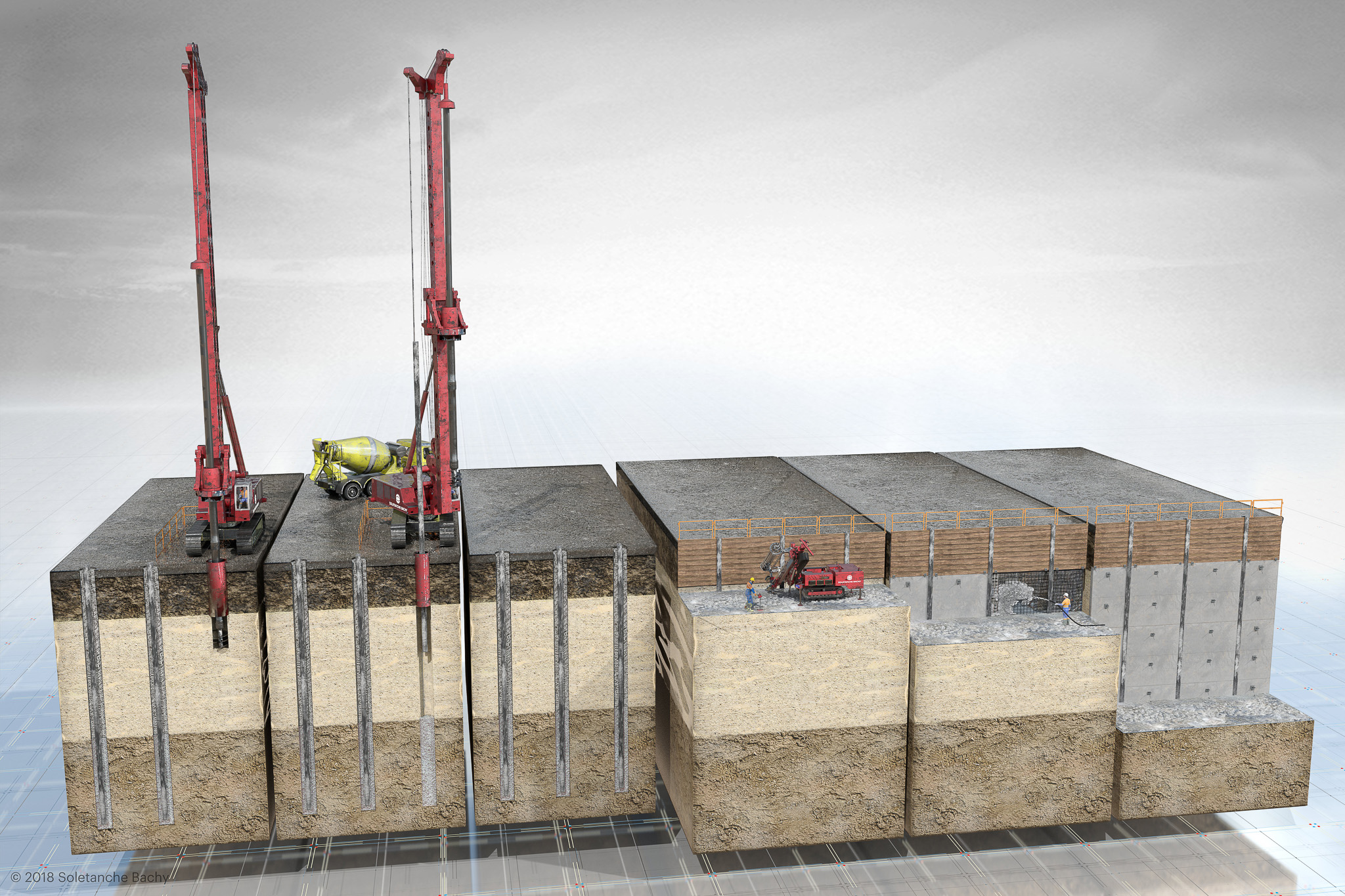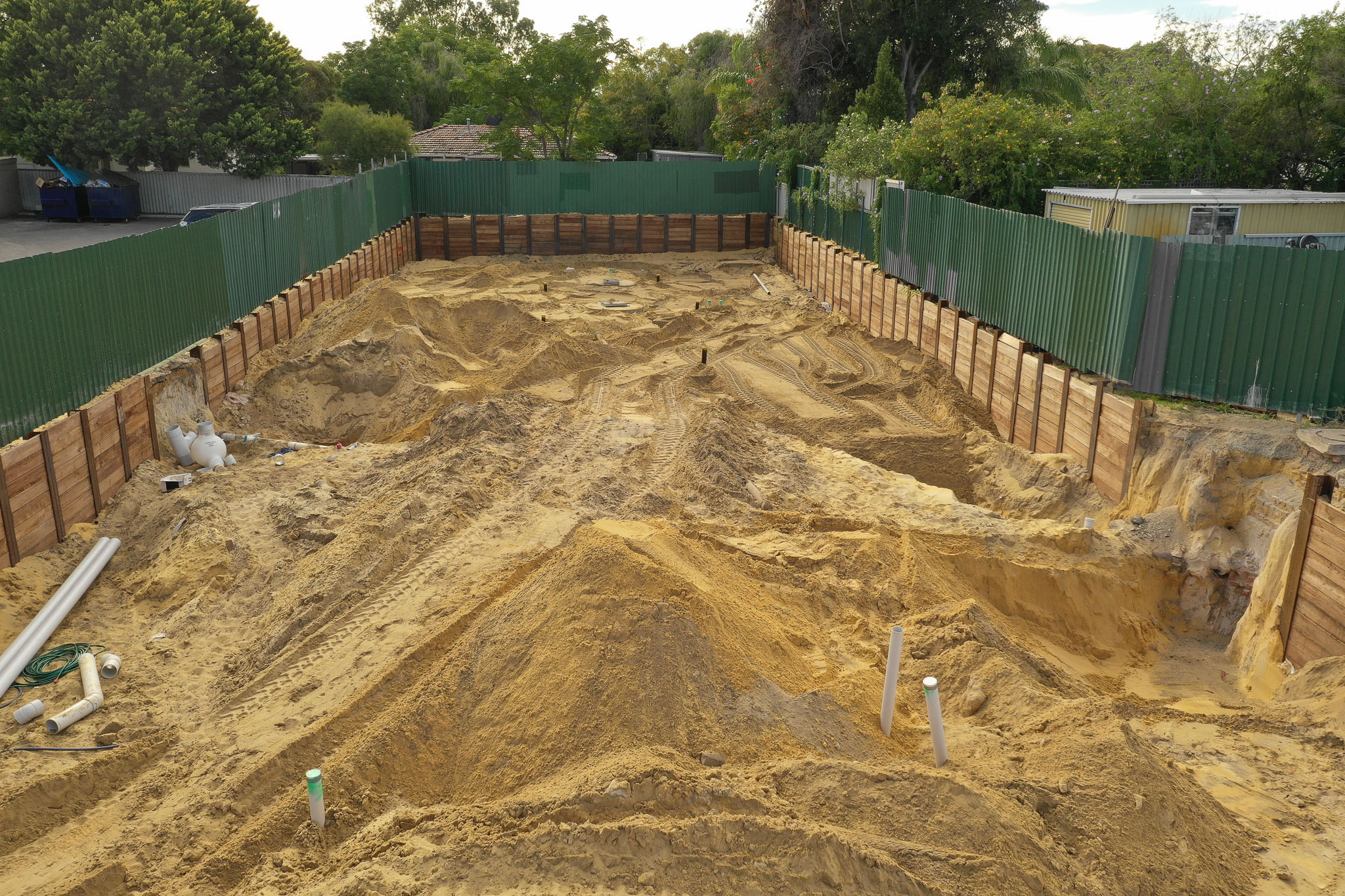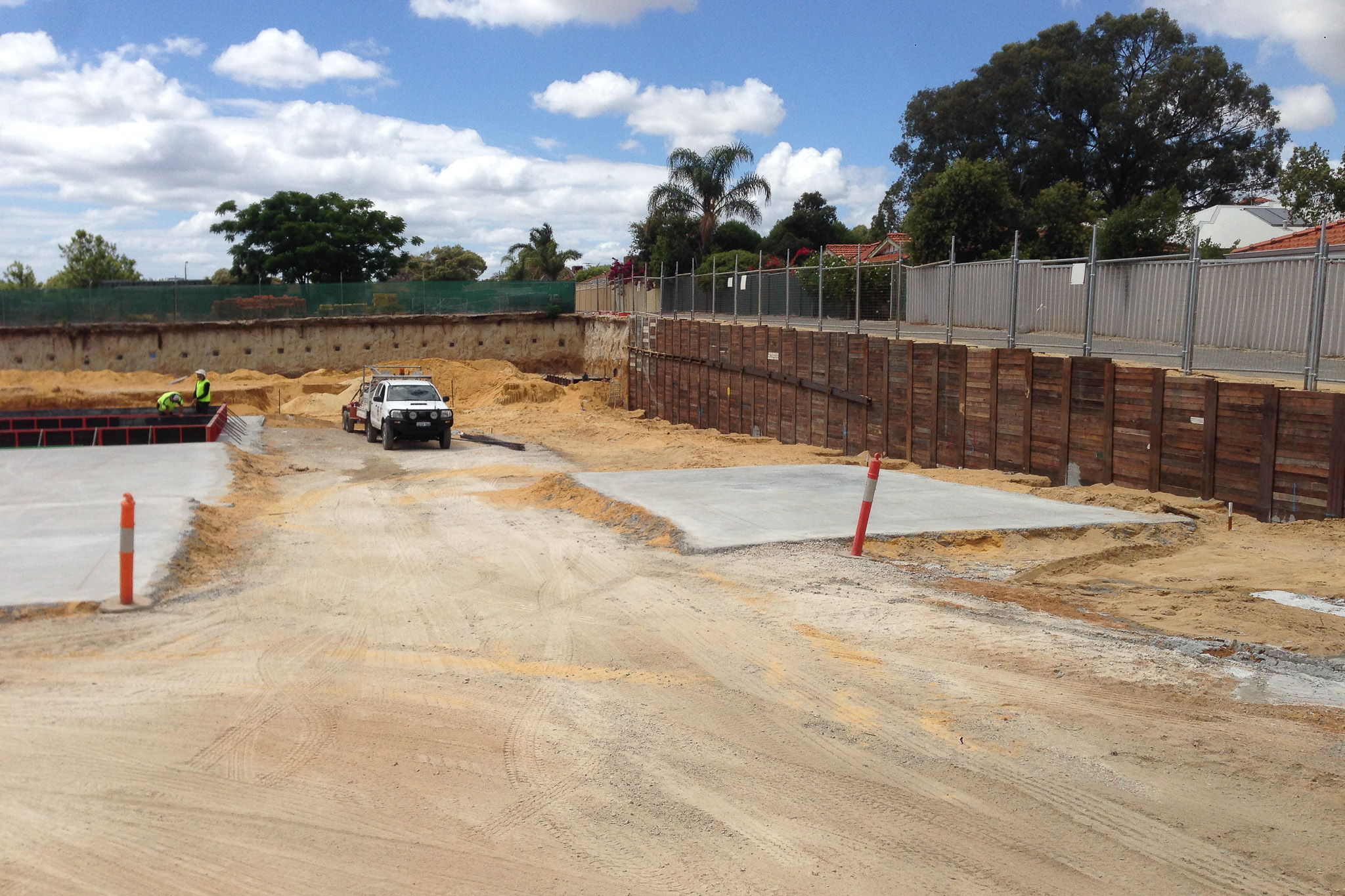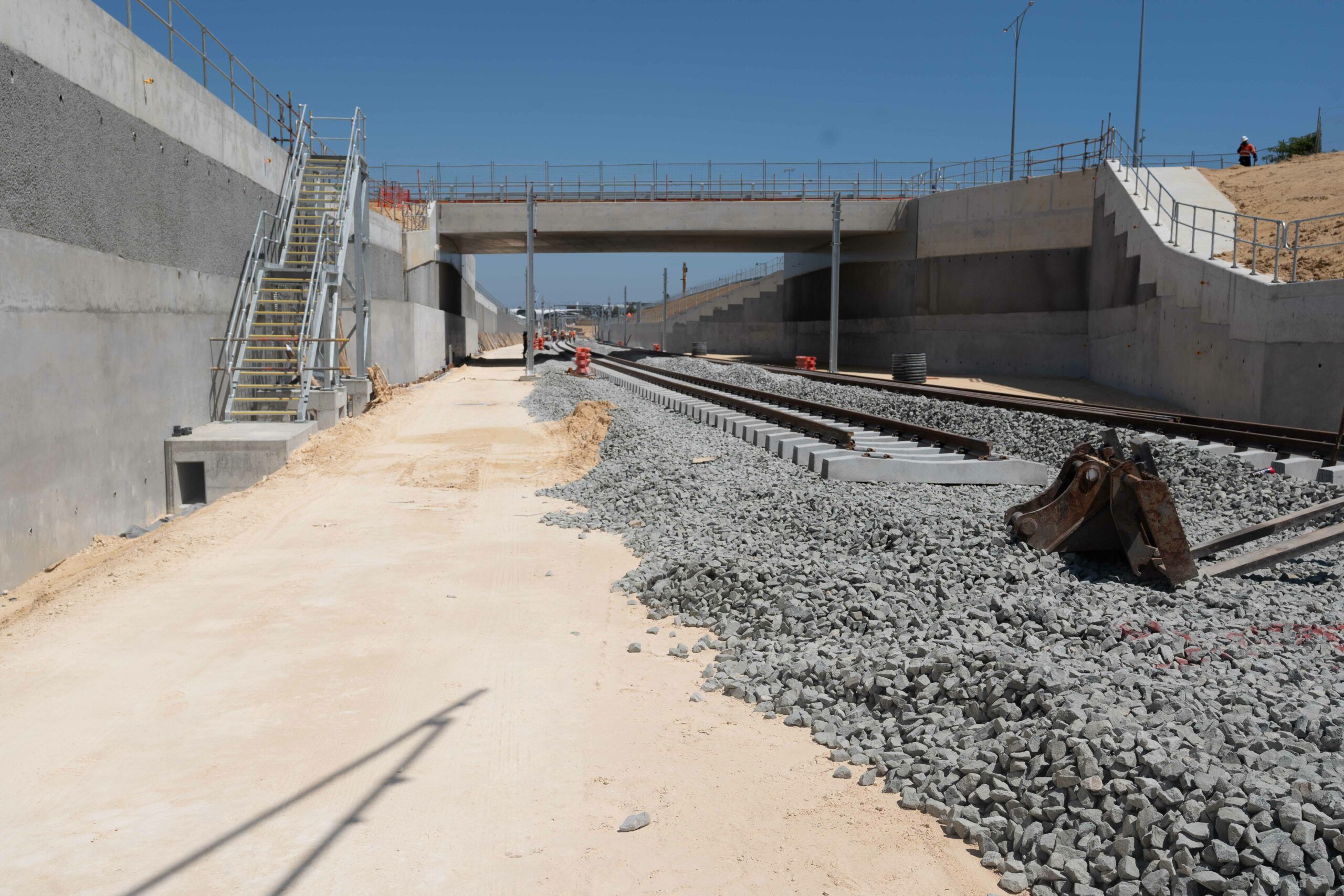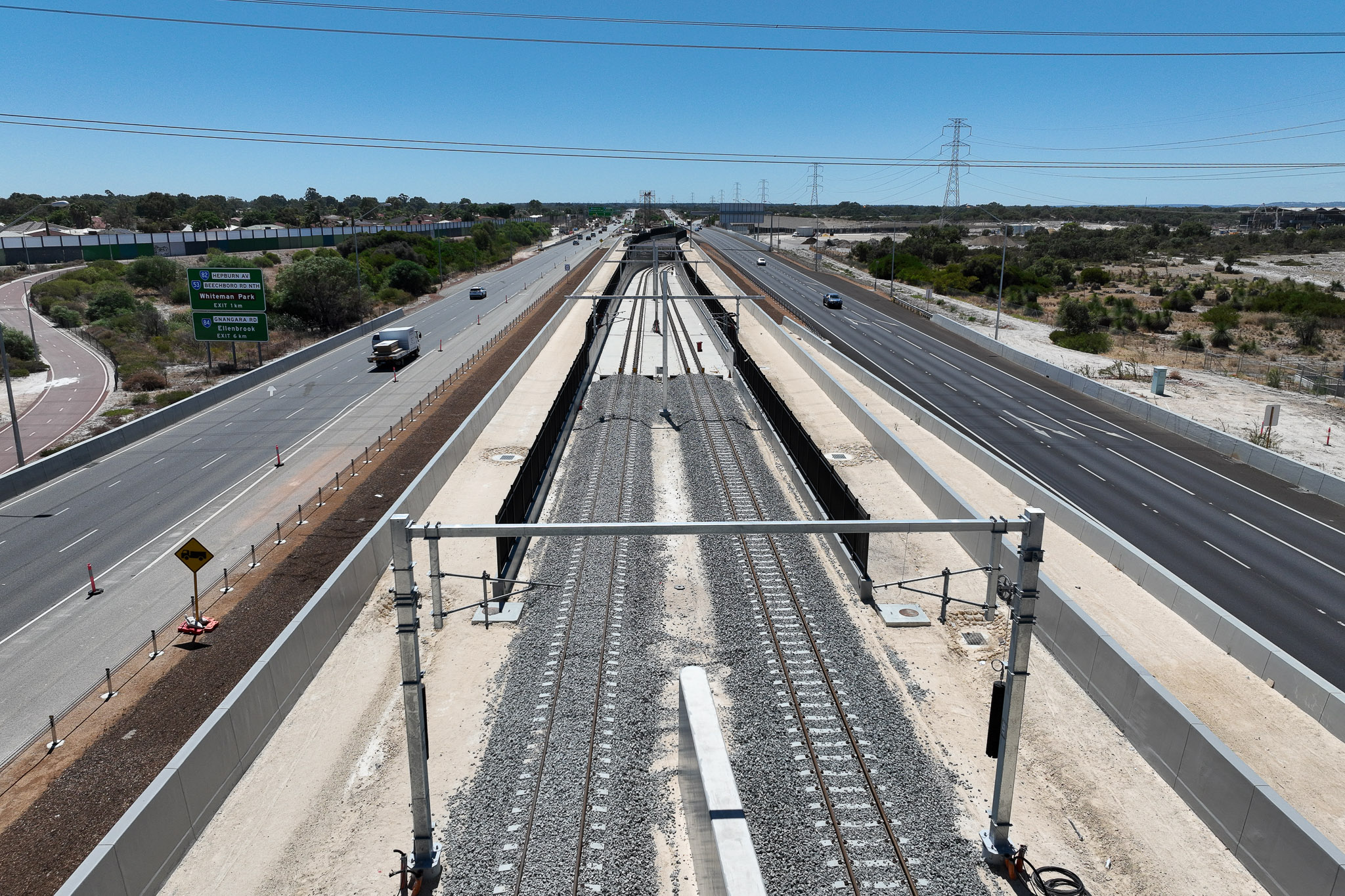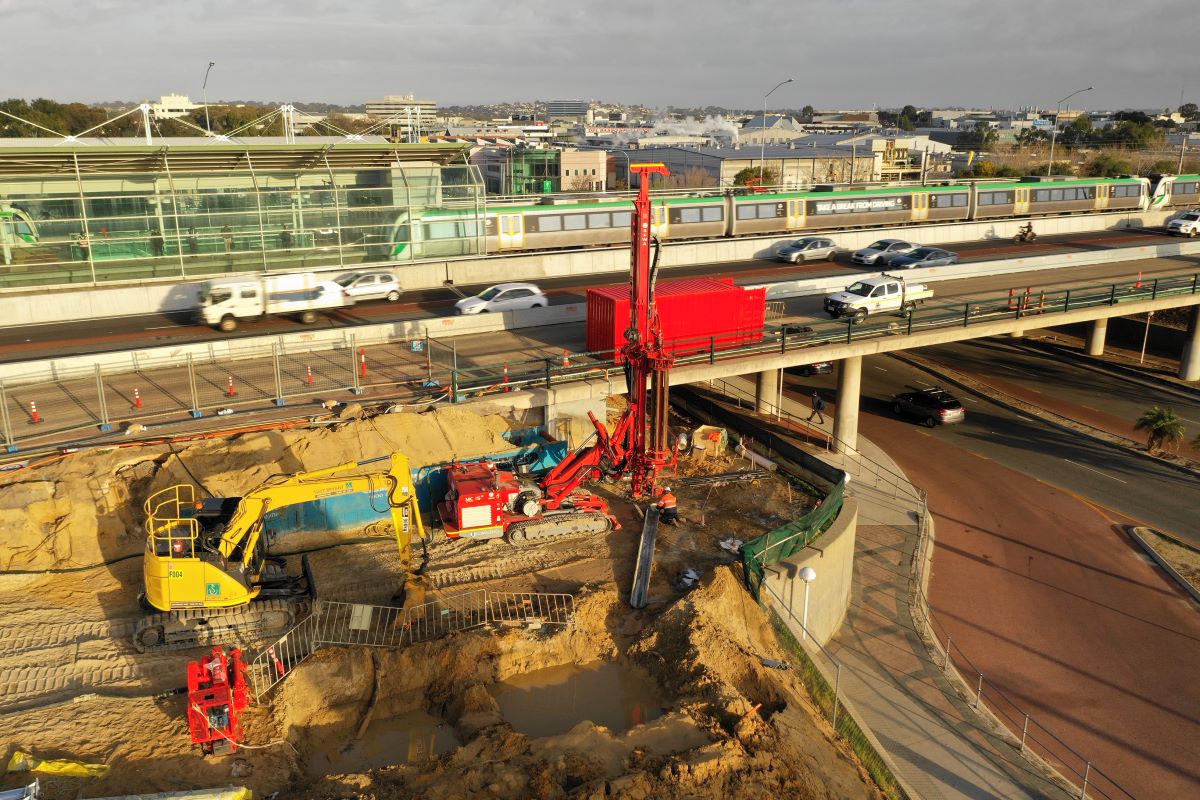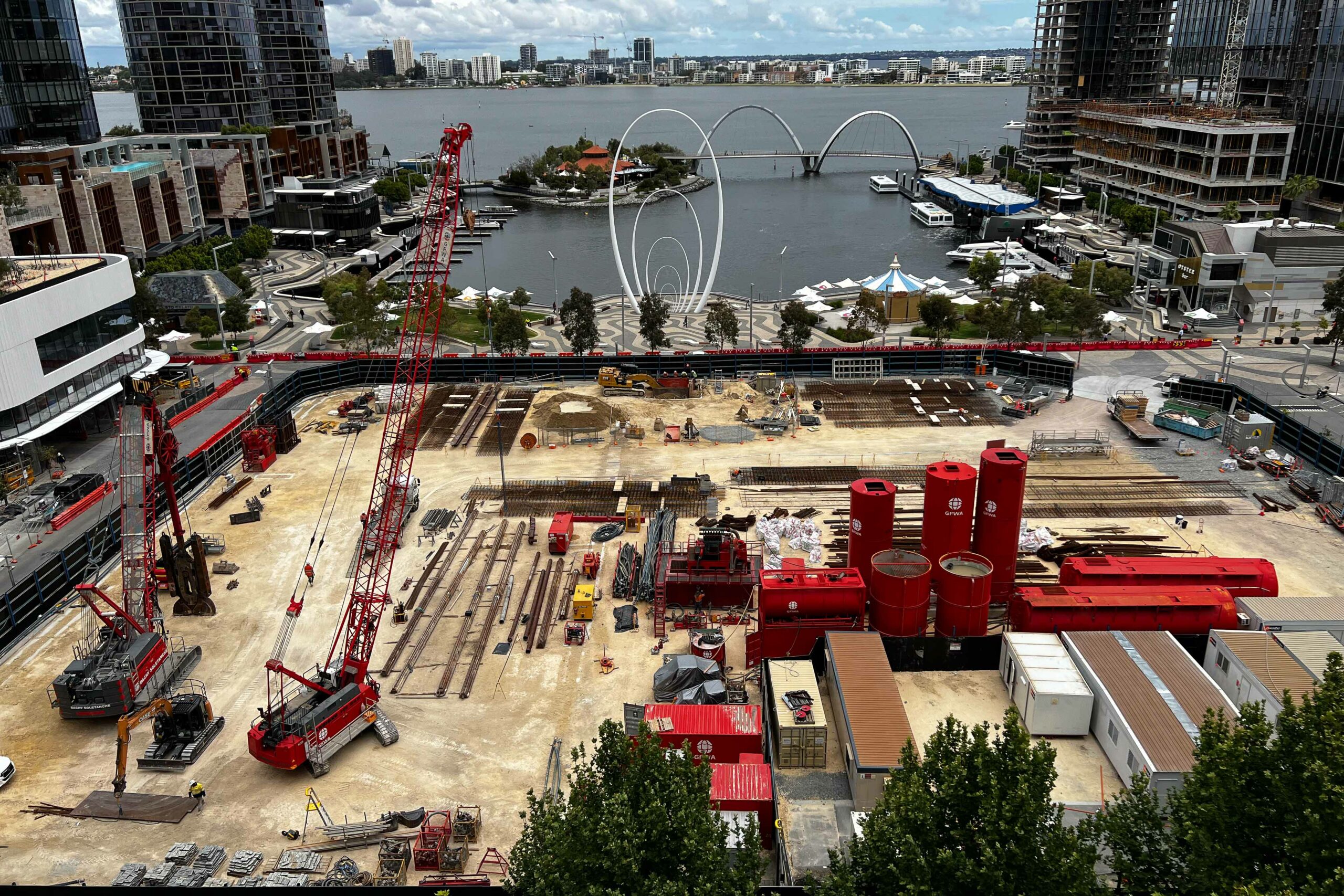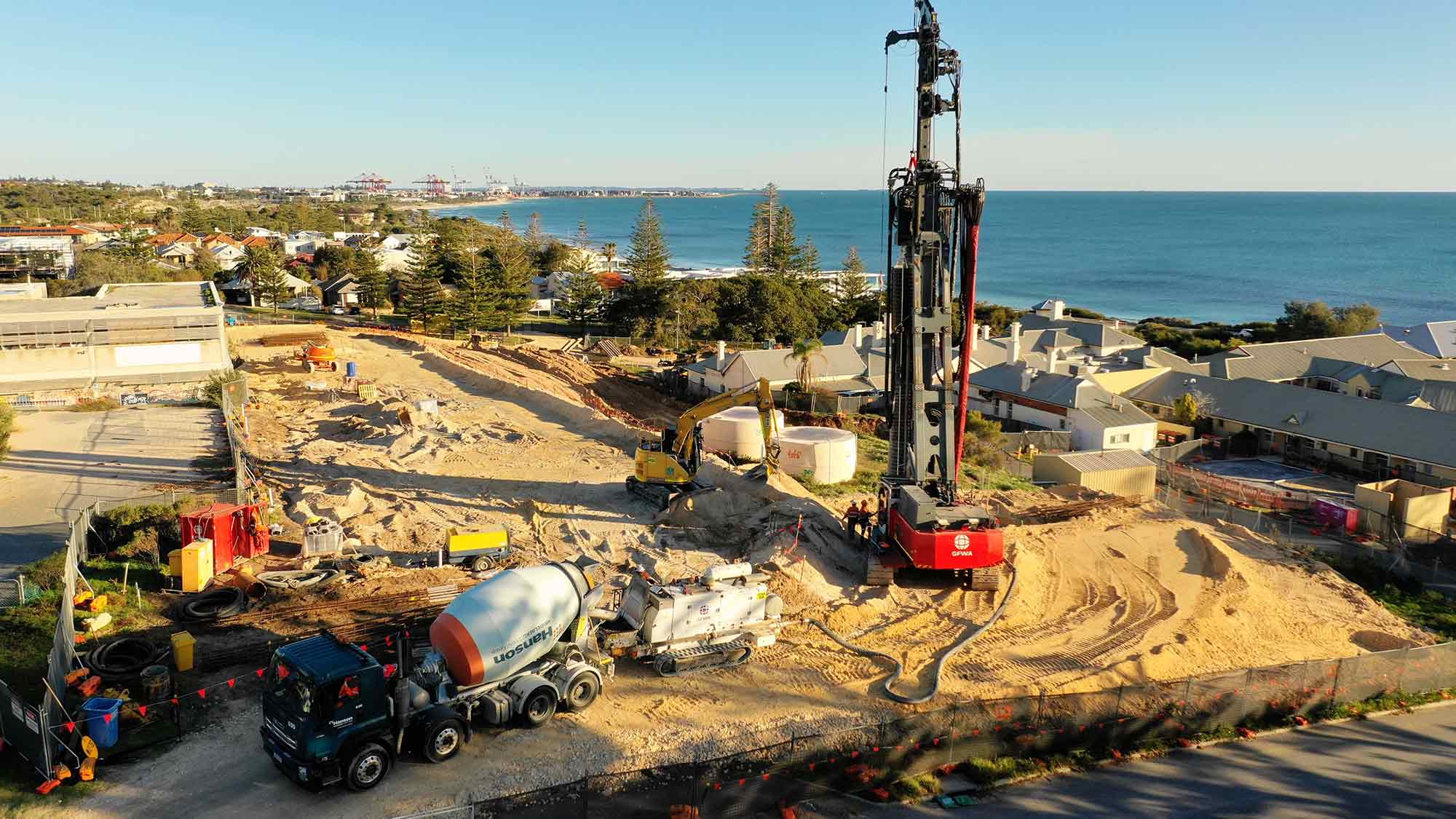Project Description
Soldier Pile Wall Construction for Robust Earth Retention
GFWA is an expert in soldier pile walls, with numerous projects within Australia.
Soldier piles are vertical structural elements used in construction for temporary earth retention. Typically installed before excavation, they provide support and prevent soil collapse. Commonly employed with horizontal timber/precast panels or shotcrete for added stability.
Our processes
Stage 1: Site Preparation
The construction site is cleared of any debris, vegetation, and existing structures that could interfere with the project. The alignment for the soldier piles is marked, and access for drilling and excavation equipment is ensured.
Stage 2: Drilling
Holes are drilled at regular intervals along the alignment of the wall. The drilling depth and diameter are determined by the project specifications and soil conditions. The drilling process must be carefully controlled to ensure proper positioning and depth.
Stage 3: Pile Installation
Steel H-piles or I-beams are inserted into the drilled holes. The piles provide the primary structural support for the wall. The piles are driven or placed into the holes to the required depth, ensuring they are vertically aligned.
Stage 4: Backfilling
The holes around the piles are backfilled with soil, gravel, or concrete to stabilize the piles. The backfilling material is compacted to provide additional support to the piles. Proper backfilling ensures that the piles are securely anchored in place.
Stage 5: Lagging Installation
Horizontal wooden, steel, or concrete lagging is placed between the soldier piles to retain the soil. The lagging is installed in stages as the excavation progresses, ensuring continuous support of the excavation face. The lagging panels are placed tightly against the piles to prevent soil movement.
Stage 6: Excavation
Soil is excavated in front of the soldier piles and lagging to the required depth. The soldier piles and lagging support the excavation, preventing soil collapse. The excavation process must be carefully managed to avoid disturbing the integrity of the wall.
Stage 7: Quality Control
The soldier piles and lagging are inspected for alignment, depth, and structural integrity. Non-destructive testing methods such as load testing or integrity testing may be used to assess the quality of the piles and lagging. Ensuring that the soldier pile wall meets all design and safety standards is essential for the success of the project.
Related projects

